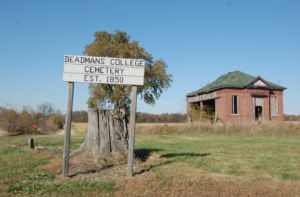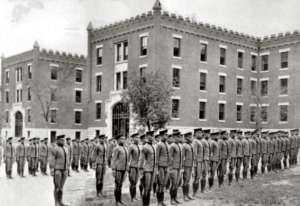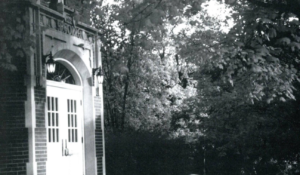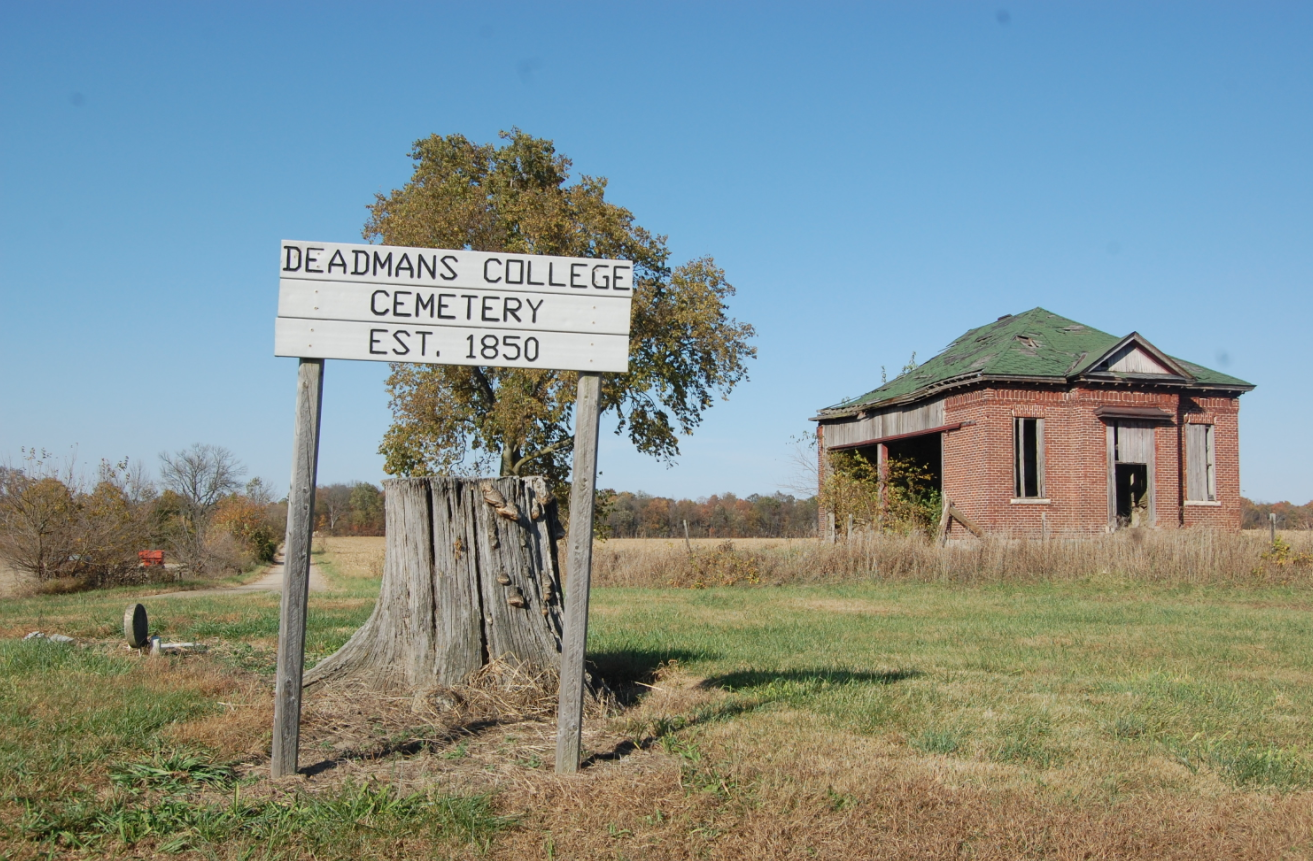Writer / Jeff Kenney
Photography Provided
It’s the time of year, once again, when spooky stories come to the fore, and there are several in the Lakes readership area (including, no doubt, some that aren’t included in this article).
One tale that’s not only stood the longest test of time but which has been featured in the pages of collections of ghost stories and folklore both regional national is that of the ghost of Pau-Koo-Shuck.
The story begins with Potawatomi Chief Aubbeenaubbee, whose village occupied the south shore of Lake Maxinkuckee and into Fulton County. In 1835 (according to some sources), the old chief, in a bout of rage, killed his wife, with tribal elders directing his eldest son, Pau-Koo-Shuck, to exact justice upon his father for the crime. Eventually, Pau-Koo-Shuck found his father and killed him, taking on the mantle of the chief of what had been Aubbeenaubbee’s band.
The actual historical details become a bit murky from there. There’s evidence to support the possibility that Pau-Koo-Shuck voluntarily joined other Potawatomi in 1837 in migrating to lands in Kansas designed by the federal government in forced removal of Northern Indiana Potawatomi. There’s also some evidence that Pau-Koo-Shuck was part of the tragic, 1838 Trail of Death which departed from Twin Lakes (site of the Potawatomi Catholic chapel) in September of that year.
Either way, Pau-Koo-Shuck was among those who opted not to make the full journey to Kansas and instead returned to Maxinkuckee. He died within a short time of his return, sad and frustrated at the turn of events that had befallen his people.
In the years that followed, well into the 1840s, a number of the European-originated settlers who had moved to the area swore they saw Pau-Koo-Shuck’s ghost, paddling his canoe or dancing along Maxinkuckee’s shores on foggy nights, a phenomenon which made headlines and was repeated and written down through the years.
Another commonly repeated tale of an area haunting, which includes a bit of visible evidence for those interested in taking a drive, is that of Dead Man’s College.

At the intersection of 700 N and 500 W in Fulton County’s Richland Township sit the remains of a late 19th and early 20th-century one-room, brick schoolhouse — not, despite the popular name attached to it, an actual college. Adjacent to what’s left of the building (which, over recent years, has become very little) sits a raised hump of ground around which 500 W makes a “Y,” some 100 feet in front of (to the west of) the school building itself. The ground was (and is) an abandoned family cemetery, where at least three young children are buried, in addition to David Rumbaugh, who was born in 1798 (and died in 1850).
That cemetery, coupled with the large, wooden sign, “Dead Man’s College” (which was added more recently), not surprisingly, has a variety of ghostly legends attached to it, including the claim that at least one person is buried under the front steps of the schoolhouse (or in some rumors, under the building itself), and of course, there’s the obligatory claim that a visit to the place at midnight will reveal ghostly children in vintage attire who appear and ask one play with them.
The old schoolhouse was built sometime after 1876, according to online sources (the latest year of death among the graves is 1864). Besides its unique name, which appears to have been the commonly used one during its tenure as a school (which must have been a lot of fun for the pupils), arguably its greatest claim to fame is that Vernie Bowen taught there in 1918 when his infant son Otis was born. Of course, Otis Bowen would become one of the Hoosier state’s most popular governors in 1972, and later Secretary of Health and Welfare under President Reagan.
A number of recollections of Dead Man’s College can be found online, in Fulton County resident Judge Tombaugh’s invaluable local history and genealogy material at the Fulton County Library website (www.fulco.lib.in.us).
Among other information there, it’s noted that the playground was in front of the building, which put it in close proximity to the cemetery. There’s also the tale of a student prankster who attached a bell to a string or rope. Former pupil Dan Cook (born in 1893), wrote that a classmate “would ring the bell with his foot during school, and was not detected by the teacher. This became a sort of tradition (among students through the years)…a favorite line the boys told the teacher was that the bell was rung by the ghost of one of the dead people buried under the school. There was even a story that a man was killed and buried under the school.”
Dead Man’s College saw its final semester in the spring of 1926, and despite the spooky ethos the place may suggest to us today, its former students and staff report happy memories of it.
“Although it bears the marks of age,” wrote Bowen of the school, 64 years after it closed, “to all those who went to school there or taught there, it is an emblem of community service. If it would talk, it, like all of the other abandoned one-room district school buildings, would say, ‘Farewell. I have served my time.’”

Speaking of schools, an institution as historic and storied as the 1894-founded Culver Academies might be expected to have its share of ghost stories as well, with the longest-lived being “The Phantom of Argonne.”
According to the school newspaper, the Vedette, of March 26, 1926, a dark figure patrolled the third-floor halls of Argonne Barrack, a structure completed in 1919 and named (along with its adjacent barrack, Chateau Thierry) for World War I battles in which the school lost the highest number of its graduates.
Cadets heard “weird shudders and moans,” footsteps, and the water fountain running, though, when checked, students found the fountain dry.
The phantom reappeared in a Feb. 1, 1994 article. By then, both Argonne and CT, as its known on campus, had become girls dormitories, and girls living in Argonne swore that “a man dressed in a tuxedo appears in the mirror in their bathroom. This spooky gentleman is referred to as ‘Tuxedo Man.’”
Argonne residents also reported hearing the showers mysteriously turning on and off, though some didn’t know whether to chalk it up to a ghostly presence or just “bad plumbing.”

Other ghostly tales on the Culver campus include students sneaking to the Memorial Chapel late at night and seeing ghostly boys singing, aging into old men before their very eyes, as well as the popular legend of “Clubfoot,” a revenge-seeking denizen of the school’s summertime Woodcraft Camp.
Fine Arts instructor Bob Nowalk reported that, during a late-night work session in the school’s Eppley Auditorium, he heard a door opening and footsteps climbing the stairs to the stage, crossing the stage, and climbing back down the opposite stairwell, opening and closing the exit in departure. The problem: Nowalk could see no one making the obvious, nearby noises (others have reported similarly strange noises and presences in the building).
Another oft-mentioned haunted site, though now only a memory, was the popular Hayloft Restaurant west of Plymouth. In the late 1980s, staff and owners of the converted barn began to notice an array of strange happenings including the appearance of an overalls-clad ghost who often smelled of burning wood. Eerily, the building burned to the ground in 2001.
There’s also the longstanding claim of the cemetery known as “Little Egypt” in the Bremen area being haunted, complete with pale apparitions and disappearing lights, among other local legends.
Believe in these, and other area ghost stories, or not, they make for October and Halloween fun and perhaps serve as a reminder that, just maybe, as Hoosier poet James Whitcomb Riley famously wrote in his legendary “Little Orphant Annie” poem, “…the Gobble-uns ‘at gits you Ef you Don’t Watch Out!”











Comments 1
This was a great read. I saw the pic. and wanted to know why they would name a school,with such a name.